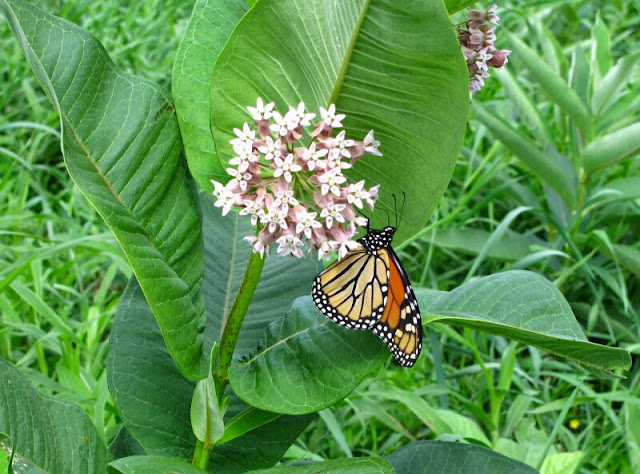Butterfly Weed (
Asclepias tuberosa) is one of the wildflowers that always draws my attention for several reasons when it blooms. Butterfly Weed is a perennial plant with bright orange color that makes it stand out from the green background. We only have a couple "clumps" of Butterfly Weed growing on our property, but we are lucky to have it growing next to our cabin driveway where it can easily be viewed when in bloom.

Butterfly Weed has many common names, such as, Canada Root, Chieger Flower, Chiggerflower, Fluxroot, Indian Paintbrush, Indian Posy, Orange Milkweed, Orange root, Orange Swallow-wort, Pleurisy Root, Silky Swallow-wort, Tuber Root, Yellow Milkweed, White-root, Windroot, Butterfly Love, Butterflyweed, and Butterfly Milkweed. As some of the common names imply, butterflies and bees are attracted to the flowers.
Two bumble bees work on a flower cluster as a third set of bug eyes watch,

Bees of all types are attracted to the flowers.

While it is easy to find the two bees in this photo, there are at least 6 ants on the same flower cluster.


















































